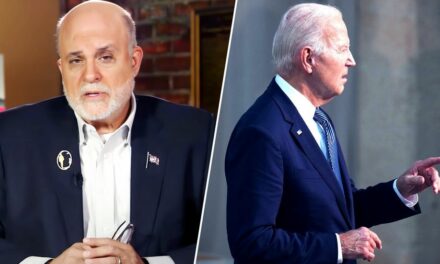We support our Publishers and Content Creators. You can view this story on their website by CLICKING HERE.

The official government numbers on the U.S. economy have been contradictory and confusing for quite a while now. What is clear upon closer examination is that federal government overspending and overregulation are doing serious damage to the economy, and we have yet to see the worst results of those policies.
The latest government reports show the number of jobs and average hourly employee earnings both increased more than expected in May, though unemployment rose slightly. Consumer price inflation slowed by a tenth of a percentage point after three months of increases.
The markets are still absorbing the enormous flood of money from the federal government, which has yet to recede fully.
The employment increase seems to contradict recent signs that the economy has been weakening. In addition to the conflicting rise in unemployment, other signs of deterioration include stagnant retail sales, a slowing of consumer spending, weak industrial production and manufacturing orders, increasing consumer debt, depressed new housing starts, falling annual earnings of full-time employees, and rising commodity prices.
Consumer confidence rose in May after three months of declines, but it’s still much lower than it was during Donald Trump’s presidency.
Any understanding of present economic conditions is further complicated by the Biden administration’s bad habit of reporting inaccurate numbers that make things look better than they are and then quietly revising those numbers later when people are distracted by new incorrect and overly positive numbers released for the next month or quarter. The administration reported for a full month that the economy grew by 1.6% in the first quarter of 2024, then revised it down to 1.3%, a precipitous drop from 3.4% in the fourth quarter of 2023.
Remarkably, Federal Reserve Chairman Jerome Powell admitted he believes the White House has been cooking the books, stating last week, “You have payroll jobs still coming in strong, even though there’s an argument that they may be a bit overstated.”
Even if we take the numbers as given, they are dismal when examined carefully. When employment and unemployment both rise, it means more people are in the workforce and looking for jobs. Unfortunately, as noted at ZeroHedge, “The only job growth in the U.S. is for [illegal aliens], who will work for below minimum wage, which also explains why inflation hasn’t spiked in the past year as millions of [illegal aliens] were hired.”
Legally resident American workers saw no job increase in the past year, and unlawful residents willing to accept wages Americans cannot are dragging down wages.
With employment conditions for American workers stagnant at best, the job market is another indicator that economic growth is slowing and the Federal Reserve should lower interest rates to reduce its suppression of economic activity. The Fed decided not to do so at its meeting last week, in fear of sparking another bout of price inflation. In March, the Fed’s governors had stated they expected to cut rates three times this year. Now, they project they will make only one rate cut.
The markets had already priced in three expected interest-rate reductions for the year, however, suggesting a correction is in order. Even so, the stock markets stayed steady after the Fed’s interest rate announcement, with the Dow falling slightly and the S&P 500 and Nasdaq rising to new record highs.
Economist Robert Genetski calculates that the S&P 500 is currently overvalued by 34%. If investors decide the market is near its peak and start selling to take their profits before prices fall, the market could drop significantly.
The federal government has artificially pumped trillions of dollars into the economy since 2020, propping up the markets. This overspending continues. In the first eight months of the current fiscal year, the federal government has already accumulated more than $1.02 trillion in additional debt, with a staggering deficit of $348 billion in May alone.
Meanwhile, investors reportedly believe the U.S. economy is about to enjoy a significant expansion because of AI: “Hype around artificial intelligence has helped push major stock indexes near records by boosting shares in tech companies, chip makers and even utilities,” the Wall Street Journal reported.
The enthusiasm for AI, however, may be more of an excuse for investment than a valid reason. The markets are still absorbing the enormous flood of money from the federal government, which has yet to recede fully. While “the near-term outlook for stocks is mildly positive,” as Genetski notes, the government’s stimulus injection may be waning and the Fed’s interest-rate hikes starting to bite, as indicated by slowing housing and manufacturing production.
Higher interest rates hinder businesses from investing in production and consumers from spending on goods that support those businesses. Additionally, the Biden administration has implemented a regulatory program that will directly cost the economy $3.95 trillion in 2025 and indirectly result in a staggering $75.05 trillion in opportunity costs for that year alone. Andrew Langer of the Institute for Liberty writes, “The opportunity costs reflect potential economic activities foregone due to the regulatory burden, including innovation, business expansion, and job creation.”
That kind of weight on business activity will reduce the nation’s productive capacity regardless of any hoped-for benefits from AI.
The government, the Fed, and the markets appear to be operating on the assumption that the U.S. economy can take any amount of abuse the federal government can inflict. The economic numbers suggest they are wrong.

 Conservative
Conservative  Search
Search Trending
Trending Current News
Current News 







